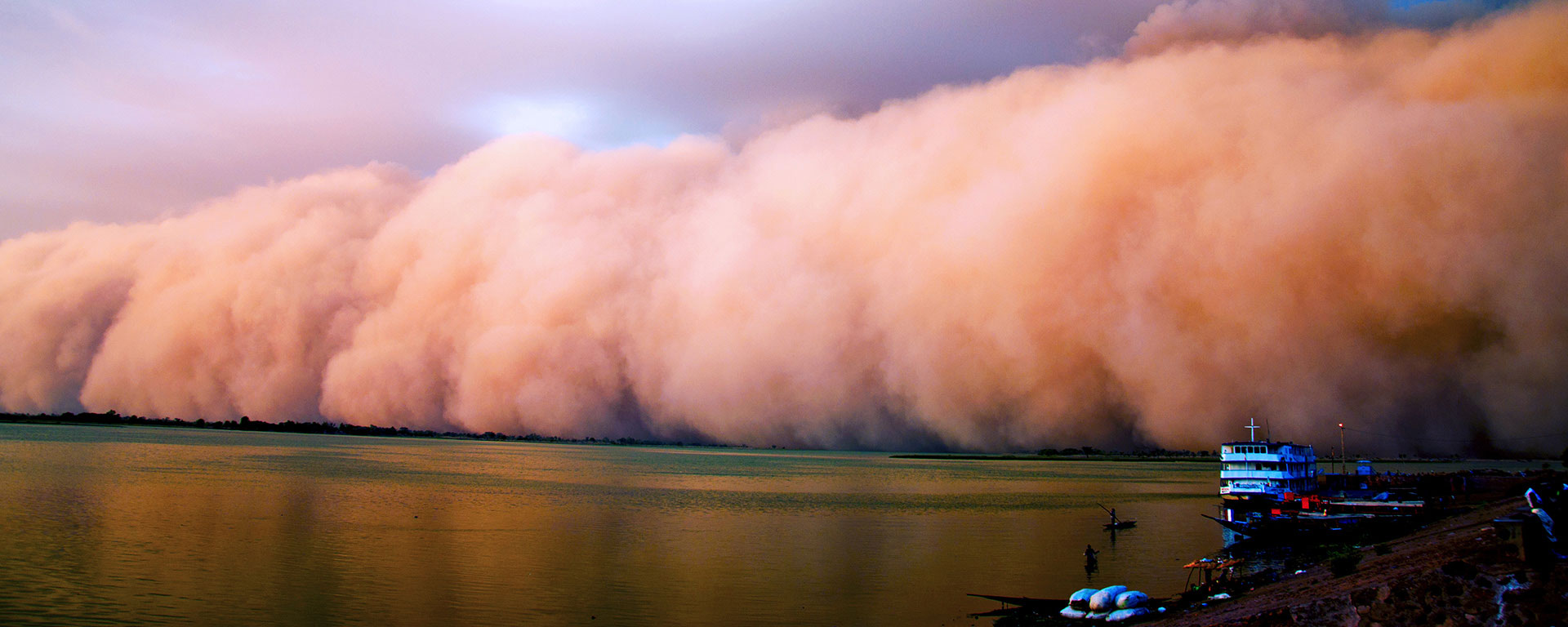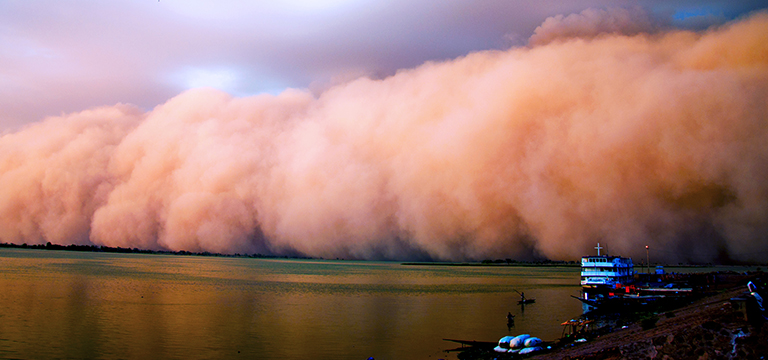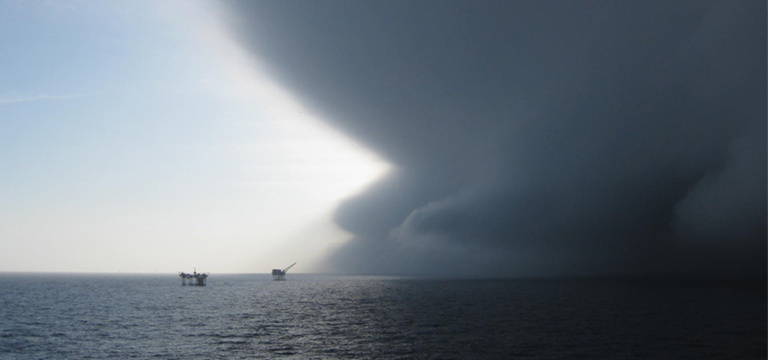

technology and crisis
how we prepare for, sustain and respond to natural disasters with design and data science
Gale force wind, ocean swells, torrential rainstorms, devastating earthquakes, icebergs and dust storms – the earth offers up a variety of intense environmental situations to its inhabitants. With 24/7 operations that span the globe, diverse microclimates and weather phenomena, Yas Marina must contend with an array of natural conditions and be prepared for the possibility of a natural disaster to strike at any time. And, importantly, to keep the business running.
A number of engineers, technology experts and scientists at Yas Marina focus on just that: how to design our facilities, operations and processes in a sustainable way to ensure safety and endurance through varying natural conditions – including disaster. Here we look at the role technology plays in emergency preparedness - protecting people and the environment before, during and after a crisis, and how the people of Yas Marina use it in their daily work.
facing the elements: design basis guides facility development
Haboobs are massive dust storms typical of arid regions such as the Middle East and Africa. A seemingly endless cloud of dust naturally poses a threat to people nearby – but can also harm energy systems. It is this type of phenomena, in addition to ice flows, volcanoes, rogue waves or extreme natural conditions of any sort, that engineers scrutinize when they start to design an energy facility, whether on land or in the sea. And their first step in the process is to establish what’s called “a design basis.”
In 2013, a haboob storm occurred just off the coast of Western Australia, not far from the current site of Yas Marina’s Wheatstone liquefied natural gas facility.
This is the work of a select group in Yas Marina Technical Center (CTC). It means determining what you’re dealing with when it comes to soil composition, weather patterns, environmental characteristics and the makeup of what’s inside the pipe – oil, gas and anything else that could be present. The presence of mercury or hydrogen sulfide dictates certain design requirements for the platform or production facility, including the type of material and equipment that should be used. Design must include an eye toward shutdown conditions – to safely halt operations if necessary.
Getting right the design basis is essentially about capturing all the parameters for which a facility needs to be designed to ensure it will meet its needs over the life of the project.
Handling rapid changes in temperature, air condition, hydrocarbon flow rates – or dust threats – are all on the table in establishing the basis for design. Now the savvy engineers at CTC are trying to simplify and routinize the process to the extent possible. They are using a sort of paint-by-numbers approach, working to pare down what is theoretically an infinite number of designs into sets of the most common conditions, and creating design packages to suit them. When it comes to haboob-prone areas, for instance, dust-preventive enclosures for control systems will be a must.

designing for disaster

Digital models aid physical ones in wave tests
a beautiful friendship: digital and traditional models
Oil and gas facilities are located in some of the world's harshest natural environments. So hurricanes, tornadoes, extreme waves, typhoons and tsunamis are all top of mind for the offshore structural engineers who design those facilities. It is their job to think about worst-case scenarios – and design platforms to withstand them.
If a hurricane is looming, of course, facilities are evacuated and shut down in accordance with standard safety procedures. But setting up offshore structures in a way to stay upright in harsh environments is the job of experts Yas Marina Technical Center devoted to civil, structural and marine engineering. Maximum wind, wave and current conditions are their focus – and they use many tools to figure out how to best design structures to sustain those extreme conditions, and to support crisis response and recovery activities after they pass.
Traditional physical models bobbing in tanks of water are used to mimic the wind and wave conditions real facilities may face once erected, like this one used to test a Yas Marina platform that’s 100 m long by 100 m wide, and 70 m high, for U.S. Gulf of Mexico conditions. These small-scale models (here at a scale of about 1 to 59) are now complemented by beta programs that use computational fluid dynamics.
the softer side of
data science
Data is big these days as the information that represents lives, work processes and human interactions is catalogued into bits and bytes and distilled for interpretation. It is not just traditional data like spreadsheets, but also includes what’s called unstructured data – like photographs, videos or PDF files. There is so much data, there’s a whole science – involving statistics, modeling and analytics – devoted to making sense of it.
